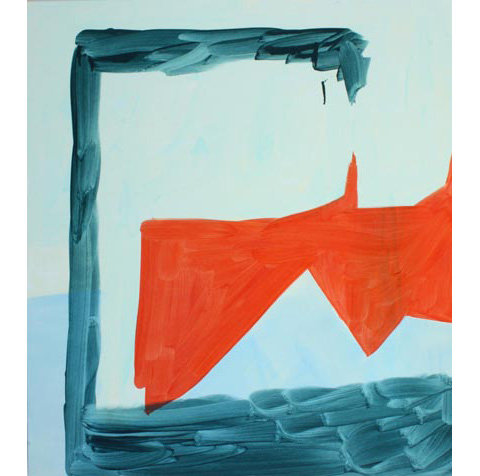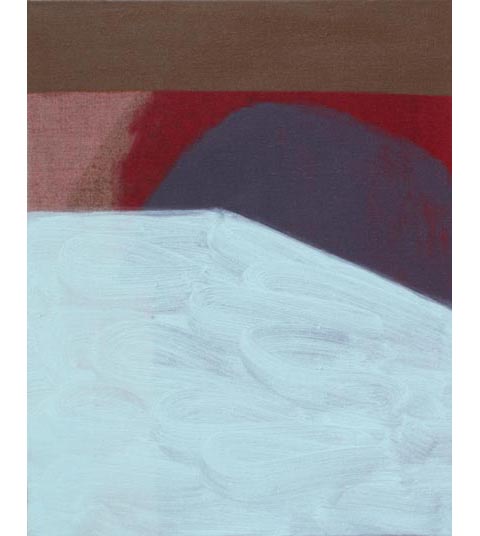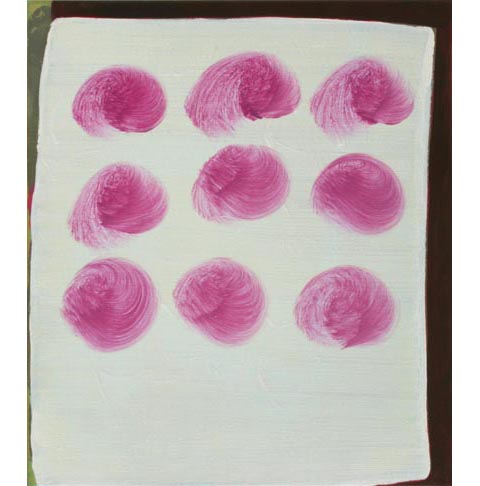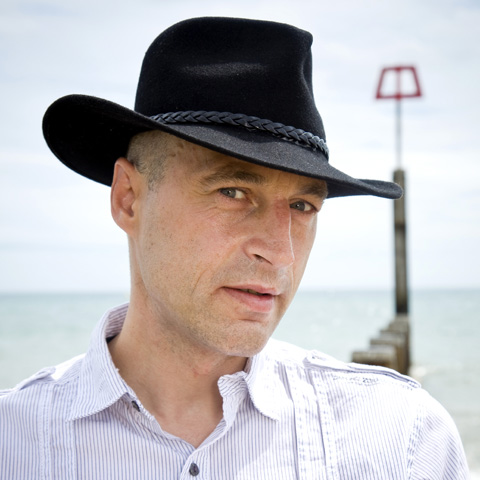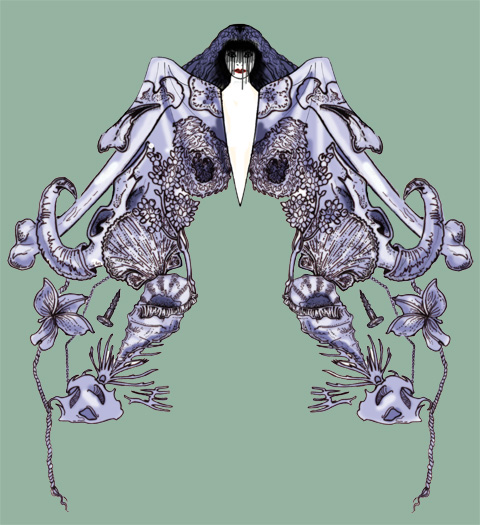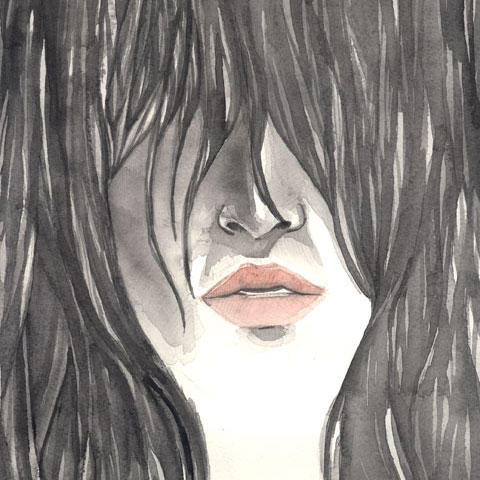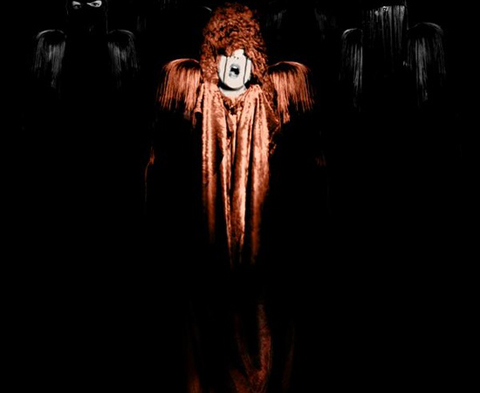 Long Story Short, erectile look 2010
Long Story Short, erectile look 2010
Since graduating from Wimbledon College of Art in 2009, Alice Browne has exhibited her paintings at Foremans Smokehouse Gallery’s Divergence exhibition and opened her shared studio to the public during the recent installament of Hackney Wicked. In 2010 Alice Browne was selected to participate in Bloomberg New Contempories, which is currently at the ICA. Earlier this week, Amelia’s Magazine had the pleasure of interviewing Alice Browne.
How did it feel to be selected for New Contemporaries?
Very exciting, and it really boosted my confidence in the studio. It has been great to meet other artists through the show.
What attracts you to the medium of paint?
I think, I’ve always found that paint was the medium which allowed me, the most experimentation. It involves more collaboration than mastering.
What were you first experiences of art or if you had to, which artist(s) have had the greatest effect on your work to date?
Early experiences of art included the Greek and Roman pottery and sculpture in the Ashmolean and treasure trove of oddities at the Pitt Rivers in Oxford. I was introduced to painting through trips to the National Gallery. I was very influenced by an exhibition of Max Beckmann’s work which I saw in New York when I was at school. Artists who have had the greatest effect on my work include Francis Bacon, Pieter Claesz, Philip Guston and Prunella Clough.
What are the financial implications after the decision has been made to start out as a painter?
It’s a constant weighing up of time, really. I need a studio – so that increases costs, so I need to work more to pay for it, but have less time to spend in there! Eventually I hope it will pay for itself.
Do you work in a gallery or maintain a part time job?
I work at Jerwood Space part time and worked at the National Gallery until recently.
The paintings submitted to Bloomberg New Contemporaries will almost be a year old, by the time the exhibition opens, what are your thoughts and these paintings now and what are their relation to the works you are producing today?
Some of the paintings in the show were made at the end of my degree and represent the focus of a very intense studio-time, so they are quite important and I think about them often. Pink Black Pink is one of the most confident paintings I’ve made. I’m very much still exploring the grounds in which they operate, though I understand it better now.
What’s an average day in your studio?
I try to keep lots of paintings on the go (10-20 or more) so that I don’t get bogged down in the appearance of any particular painting. I expect a fair few to fail- which usually comes from overworking. I tend to go from one to the next, putting things away after I’ve worked on them. The less confident I feel, the longer I spend on each so on a really good day I could work on up to 10 paintings.
What type of paint (oil, acrylic) do you use and why?
I mostly use oil as it is so flexible and sometimes un-predictable. I use a lot of transparent colours which oil is very suited for. I do also use acrylic but usually for the more predictable priming and under-painting. If I’m not painting, my favourite medium is colouring pencils and paper.
Your statement discusses your paintings relation to “historical notions of depth relating to the flat painting surface and depth that we relate to visual experience” was there a particular painting or text which sparked your playful exploration?
My exploration was really fuelled by an interest in the range of ways that painters have represented visual space across history; from Masaccio to the trompe l’oeil of Gijsbrechts and still life painters such as Claesz, Cotan and Morandi, to de Hooch and Vermeer to Francis Bacon, Mary Heilmann and Phoebe Unwin.
I’m also interested in the way that photography and moving image represents visual space and how it changes our first hand experience of looking.
What was your relation to painting objects during your time at Wimbledon?
At Wimbledon I made quite a few paintings and photographs which described still life objects. Eventually I found that the objects got in the way; they were always charged with associations. I wanted to explore the space of the canvas or photograph rather than create an image.
How do you name your paintings?
I start with a sort of word association game and go from there.
What does the sub-title of the exhibition “painting between representation and abstraction” mean to you?
For a while I’ve felt uncomfortable with using these terms – I don’t find it so useful to be defined as ‘representational’ or ‘abstract’, so being somewhere in-between sounds about right.
Had you met any artists before deciding to be one?
A family friend is a photographer who works in Hong Kong, taking pictures of the landscape. I always thought it was amazing that anyone could do something so beautiful for a job.
What was it like to study at Wimbledon?
Very supportive with a real sense of community. I loved being in a green and quite residential part of London.
Favourite contemporary painters?
Lots! I enjoyed Caragh Thuring’s recent exhibition at Thomas Dane gallery and Robert Holyheads show at Karsten Schubert.
How did you become to be involved in Transition Gallery’s exhibition Fade Away?
Alli Sharma curated the exhibition. Its great to be included in such an amazing selection of paintings.
Alice Browne’s paintings will be on display as part of Bloomberg New Contemporaries 2010 at the ICA until January 23rd 2011 and Transition Gallery’s Group Show: Fade Away until the 24th December, 2010.
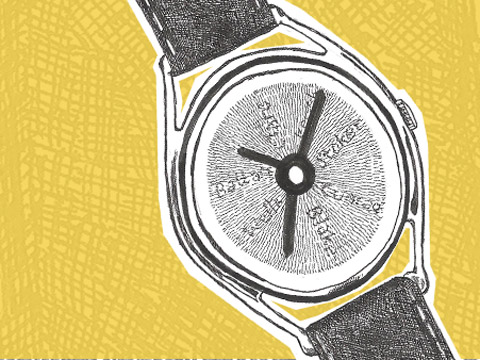 The Compass Road by Iain Sinclair illustrated by Faye West
The Compass Road by Iain Sinclair illustrated by Faye West
The decision to wear one of Mr Jones’ Watches is to accept the designer’s challenge to a modern concept of time being a series of fixed units, more about through which the day is neatly compartmentalised. A concept most succinctly visualised by the watch The Average Day watch. This piece was originally produced for The Muses. The watch-face illustrates the average activities undertaken at particular points throughout the day. The information was digested from sources researching how time is spent by an average person throughout the day. The hours are replaced by words, recipe for example 6pm becomes social life and 11 am becomes work.
 The Average Day, Photograph by Chris Overend. The Muse for this particular watch was Jonathan Gershuny, Director of the Centre for Time Use Research and who Mr Jones stipulates has “750,000 time-use diaries.”
The Average Day, Photograph by Chris Overend. The Muse for this particular watch was Jonathan Gershuny, Director of the Centre for Time Use Research and who Mr Jones stipulates has “750,000 time-use diaries.”
Continuing to dispense with Western Modernity’s accepted measurement of time, Mr Jones developed Cyclops, a watch with no hour, minute or second hands. Instead a circular disk mimics the movement of shadows across a sundial, as the passage of time is meditatively documented. Encouraging the wearer to reevaluate their relationship to capitalist time in which every precious second counts.
On Wednesday 3rd November 2010 Mr Jones’ Watches launched The Masters of Time a collaboration with five unique professionals who share an unique and personal concept of time.
During the launch Iain Sinclair, author and psycho-geographer, Greame Obree, record breaking cyclist and artist Brian Catling discussed the ideas behind their watches and the process of negotiating whilst collaborating with Mr Jones. The final two watches were developed with Comedian William Andrews, and DJ Tom Middleton.
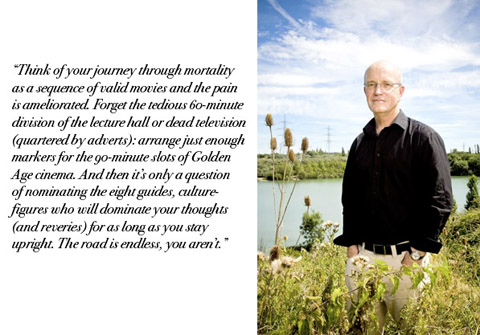 Iain Sinclair Photograph by Emilie Sandy
Iain Sinclair Photograph by Emilie Sandy
Iain Sinclair’s (Author of Hackney That Red Rose Empire) Compass Watch relates to 90 minutes of film time, rather than your usual TV time of 60 minutes. Sinclair discussed the relation of time to walking, the layers created as time passes both between an event and the walker’s presence, within the walker’s own time.
Iain Sinclair – Compass Road interview from Mr Jones on Vimeo.
Fittingly Sinclair’s watch replaces the units of time with authors whose experience was shaped both by the influence of both geographic location and a complex understanding of time. In his 15 minutes Sinclair discussed the breakdown of the poet John Clare after the enclosure of the landscape to JG Ballard’s experiences as a prisoner of war before his arrival in Suburban England.
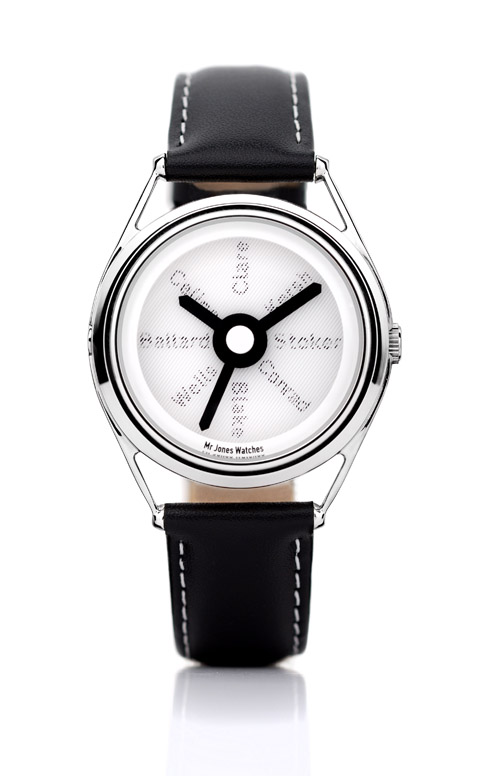 Compass Road by Iain Sinclair and Mr Jones Watches
Compass Road by Iain Sinclair and Mr Jones Watches
The performance artist and sculptor Brian Catling, introduced the ideas behind Dawn West Dusk East via an art historical slide show. Original paintings and performances explored and expanded on the concept of ‘the Cyclops’. The watch –in the words of the artist- was designed to be “enigmatic, subtle and poetic.” The single rotation of this exquisite design is a silent request to return to a slower pace. The dial gradually measures the 12 hours between Dawn and Dusk.
 Brian Catling Photograph by Emilie Sandy
Brian Catling Photograph by Emilie Sandy
The final speaker of the evening was the twice claimant of the toughest cycling challenge The Hour – a race between the cyclist, distance and the clock. Fittingly the title chosen for Graeme Obree’s timepiece is The Hour. As the hand rotates each hour reveals a different word encouraging the wearer to question emotions experienced during a variety of daily activities. Obree described The Hour as the best, worst, most exhilaratingly painful amount of time imaginable, each second a step closer to achieving or failing a lifelong obsession.
The Masters of Time launch was a fantastic introduction to an individuals complex relation to time. Sadly William Andrews and Tom Middleton were unable to attend, their watches The Last Hour and BPM played with the idea of ‘death’ on stage and a DJ’s relation to the beats per minute respectively. BPM comes complete with a specifically designed animation to help the nocturnal DJ keep count of each record’s BPM prior to the moment of a live mix.
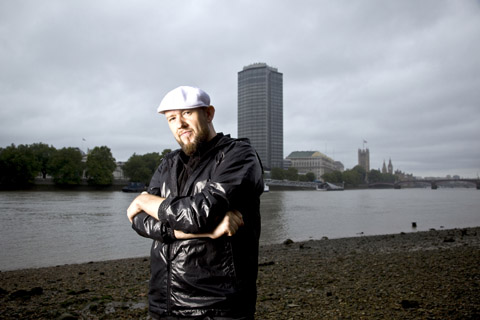 Tom Middleton Photograph by Emilie Sandy
Tom Middleton Photograph by Emilie Sandy
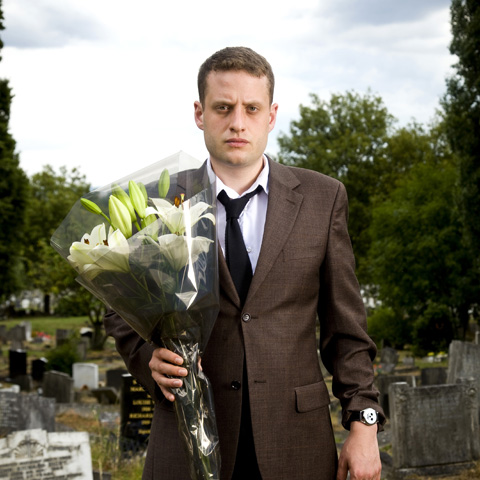 William Andrews Photograph by Emilie Sandy
William Andrews Photograph by Emilie Sandy
William Andrews The Last Laugh functions as a symbol of the performer’s need for the last laugh and a momento mori, a reminder that life is brief as time flashes past on the moving teeth of the skull illustrated watchface
 The Last Laugh by William Andrews and Mr Jones Watches
The Last Laugh by William Andrews and Mr Jones Watches
Mr Jones Watches are available from the website or you can visit Mr Jones Design, Unit 1.11 Oxo Tower Wharf?Southbank London SE1 9PH.
Compass Road and The Last Laugh are available today.
 The Compass Road by Iain Sinclair illustrated by Faye West
The Compass Road by Iain Sinclair illustrated by Faye West
The decision to wear one of Mr Jones’ Watches is to accept the designer’s challenge to a modern concept of time being a series of fixed units, adiposity through which the day is neatly compartmentalised. A concept most succinctly visualised by the watch The Average Day watch. This piece was originally produced for The Muses. The watch-face illustrates the average activities undertaken at particular points throughout the day. The information was digested from sources researching how time is spent by an average person throughout the day. The hours are replaced by words; 6pm becomes social life and 11am becomes work.
 The Average Day, patient Photograph by Chris Overend. The Muse for this particular watch was Jonathan Gershuny, buy information pills Director of the Centre for Time Use Research and who Mr Jones stipulates has “750,000 time-use diaries.”
The Average Day, patient Photograph by Chris Overend. The Muse for this particular watch was Jonathan Gershuny, buy information pills Director of the Centre for Time Use Research and who Mr Jones stipulates has “750,000 time-use diaries.”
Continuing to dispense with Western Modernity’s accepted measurement of time, Mr Jones developed Cyclops, a watch with no hour, minute or second hands. Instead a circular disk mimics the movement of shadows across a sundial, as the passage of time is meditatively documented. Encouraging the wearer to reevaluate their relationship to capitalist time in which every precious second counts.
On Wednesday 3rd November 2010 Mr Jones’ Watches launched The Masters of Time a collaboration with five unique professionals who share an unique and personal concept of time.
During the launch Iain Sinclair, author and psycho-geographer, Greame Obree, record breaking cyclist and artist Brian Catling discussed the ideas behind their watches and the process of negotiating whilst collaborating with Mr Jones. The final two watches were developed with Comedian William Andrews, and DJ Tom Middleton.
 Iain Sinclair Photograph by Emilie Sandy
Iain Sinclair Photograph by Emilie Sandy
Iain Sinclair’s (Author of Hackney That Red Rose Empire) Compass Watch relates to 90 minutes of film time, rather than your usual TV time of 60 minutes. Sinclair discussed the relation of time to walking, the layers created as time passes both between an event and the walker’s presence, within the walker’s own time.
Iain Sinclair – Compass Road interview from Mr Jones on Vimeo.
Fittingly Sinclair’s watch replaces the units of time with authors whose experience was shaped both by the influence of both geographic location and a complex understanding of time. In his 15 minutes Sinclair discussed the breakdown of the poet John Clare after the enclosure of the landscape to JG Ballard’s experiences as a prisoner of war before his arrival in Suburban England.
 Compass Road by Iain Sinclair and Mr Jones Watches
Compass Road by Iain Sinclair and Mr Jones Watches
The performance artist and sculptor Brian Catling, introduced the ideas behind Dawn West Dusk East via an art historical slide show. Original paintings and performances explored and expanded on the concept of ‘the Cyclops’. The watch –in the words of the artist- was designed to be “enigmatic, subtle and poetic.” The single rotation of this exquisite design is a silent request to return to a slower pace. The dial gradually measures the 12 hours between Dawn and Dusk.
 Brian Catling Photograph by Emilie Sandy
Brian Catling Photograph by Emilie Sandy
The final speaker of the evening was the twice claimant of the toughest cycling challenge The Hour – a race between the cyclist, distance and the clock. Fittingly the title chosen for Graeme Obree’s timepiece is The Hour. As the hand rotates each hour reveals a different word encouraging the wearer to question emotions experienced during a variety of daily activities. Obree described The Hour as the best, worst, most exhilaratingly painful amount of time imaginable, each second a step closer to achieving or failing a lifelong obsession.
The Masters of Time launch was a fantastic introduction to an individuals complex relation to time. Sadly William Andrews and Tom Middleton were unable to attend, their watches The Last Hour and BPM played with the idea of ‘death’ on stage and a DJ’s relation to the beats per minute respectively. BPM comes complete with a specifically designed animation to help the nocturnal DJ keep count of each record’s BPM prior to the moment of a live mix.
 Tom Middleton Photograph by Emilie Sandy
Tom Middleton Photograph by Emilie Sandy
 William Andrews Photograph by Emilie Sandy
William Andrews Photograph by Emilie Sandy
William Andrews The Last Laugh functions as a symbol of the performer’s need for the last laugh and a momento mori, a reminder that life is brief as time flashes past on the moving teeth of the skull illustrated watchface
 The Last Laugh by William Andrews and Mr Jones Watches
The Last Laugh by William Andrews and Mr Jones Watches
Mr Jones Watches are available from the website or you can visit Mr Jones Design, Unit 1.11, Oxo Tower Wharf? Southbank London SE1 9PH.
Compass Road and The Last Laugh are available today.
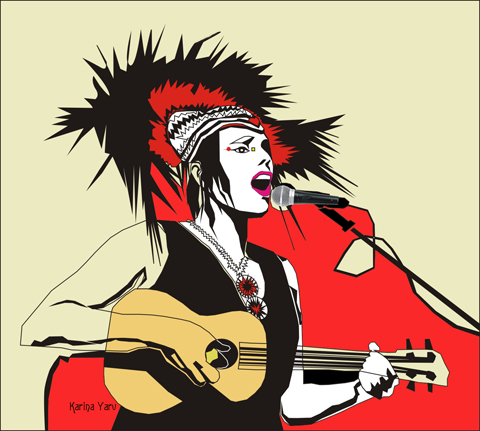
6 Day Riot by Karina Yarv.
We arrived at the Jazz Cafe just in time to catch the promising tail end of blues infused folk maestro Ian King, medicine who was followed by a set from comedian Richard Herring, trudging out the same old jokes (last heard at Latitude this summer) about his sad child less bachelor life. Is he in fact happily married, I wonder? Is it all just part of the comic schtick? He had clearly come prepared for a slightly more rowdy pre gig audience, with some poetry that he had written as an 18 year old virgin during his gap year “they called it a year out in those days”. Lines such as “The only water that was pure was from an orphan’s tears,” elicited plenty of giggles.
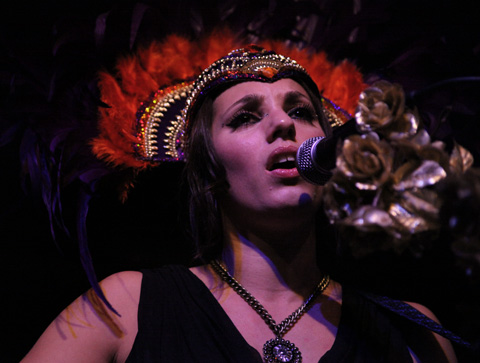
Tamara Schlesinger. All photography by Amelia Gregory.
6 Day Riot songstress Tamara Schlesinger bounced on stage in a huge red and purple feathered headdress, explaining that she’d had to do a whole rehearsal to check she could get her various instruments over her head without pulling it off. Because of course Tamara is the antithesis to your showgirl Kylies and Rhiannas, adeptly playing a plethora of instruments whilst singing up a storm in a stage grabbing outfit.

Also on stage were an energetic double bass played by Edd Harwood, the talented strains of Rachel Coleshill on violin, Gabriel Lucena on guitar, and at times two trumpeters, one of whom was indeed Rowan Porteous, the very same who has played with my band and who persuaded 6 Day Riot to play an intimate gig for Climate Camp at Glastonbury last year.

From introspectful to energetic 6 Day Riot swung through a great selection of tracks from the new album On This Island plus some older crowd pleasers, Tamara nimbly swapping between the various stringed instruments slung from her gold flower bedecked mike stand, including a sleek black electric ukelele. At one point the rest of the band left the stage whilst she dueted with her drummer Daniel Deavin, who paused to accompany her with the lightest of strums on his banjolele.


For the finale 6 Day Riot pulled out their bestest klezmer influenced tunes, Tamara twirling her arms like a Notting Hill Carvinal dervish. It was a delightful end to a joyous launch, marred only by the loss of my favourite red sparkly scarf. Still, a small price to pay for a much needed dose of quality live music.
Tamara spoke excitedly of some recently confirmed dates with her favourite band, Belle and Sebastian, but in the meantime you can catch 6 Day Riot at a few remaining shows if you’re fast. Full listing info here. Read my review of new album On This Island here.

Edd Harwood.

Rachel Coleshill.

Gabriel Lucena.

Ian King.

Richard Herring.
Categories ,6 Day Riot, ,Album Launch, ,Alex Bezzina, ,belle and sebastian, ,Daniel Deavin, ,Edd Harwood, ,Gabriel Lucena, ,Ian King, ,Jazz Cafe, ,Karina Yarv, ,klezmer, ,Kylie, ,latitude, ,On This Island, ,Rachel Coleshill, ,Rhianna, ,Richard Herring, ,Rowan Porteous, ,Tamara Schlesinger
Similar Posts:
- 6 Day Riot: On This Island – Album Review
- An interview with Tamara Schlesinger and review of solo album The Procession
- Amelia’s Compendium of Fashion Illustration (ACOFI) Launch Party – In Pictures – Night!
- MALKA: Wonder Why
- Annuals

